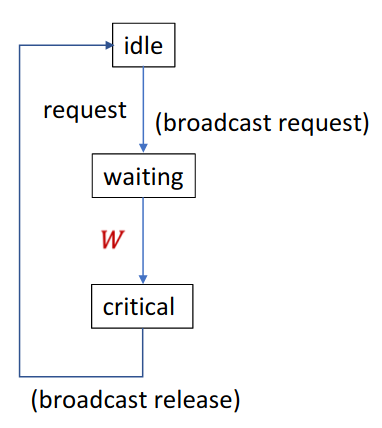std::bodun::blog
PhD student at University of Texas at Austin 🤘. Doing systems for ML.
马上订阅 std::bodun::blog RSS 更新: https://www.bodunhu.com/blog/index.xml
Lamport Distributed Mutual Exclusion
Normally, having consistent event ordering in a distributed system is hard because we have no common clock. Since we don’t have a common clock to measure with, we rely on logical properties of time in the absence of clock. Here we use causality replation between events.
In essence, Causality indicates a clock \(C\) is map from events to time satisfying: \(e\rightarrow e’\) implies \(C(e) < C(e’)\)
We can synthesize a clock by a simple protocol, usually referred as scalar clock or Lamport clock:
- Each process \(p\) has a local clock \(C(p)\).
- A message send by a process is stampled with the its corresponding local clock.
- On receiving \(M\), set the process’s local clock to be \(max(C(p), C(M)) + 1\).
This will give us a consistent total order of events in a distributed system.
Let’s take Lamport distributed mutual exclusion (DME) as an example. We use scalar clock to agree on the order of access to critical sections. Each process broadcasts a request with its local clock time. Receiver stores the request time and responds with its update local time (\(max(C(p), C(M)) + 1\)).

A process can only enter critical section given the condition \(W\) is met: \(W \equiv \forall...
剩余内容已隐藏